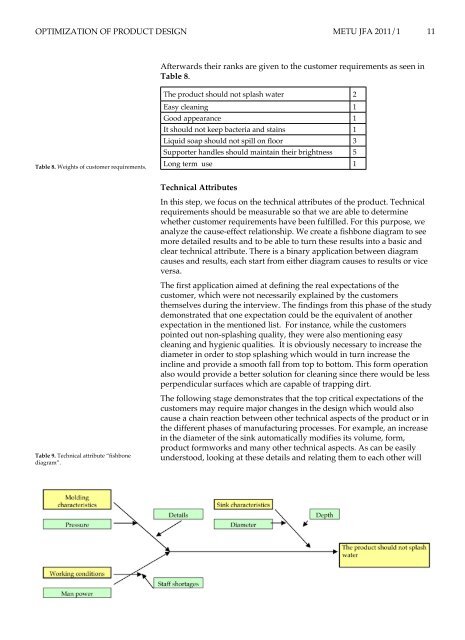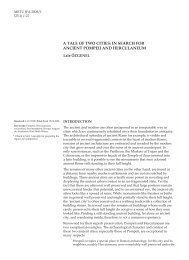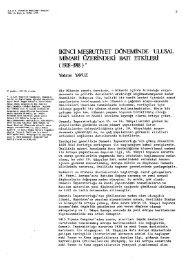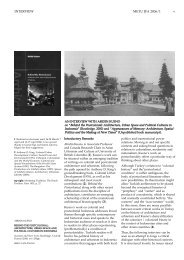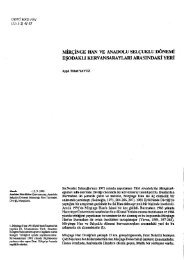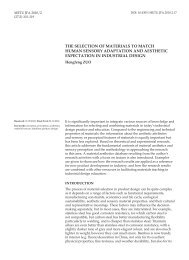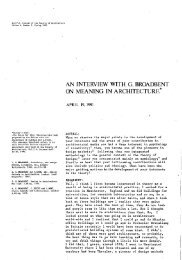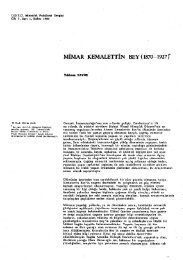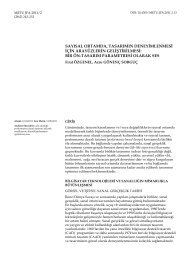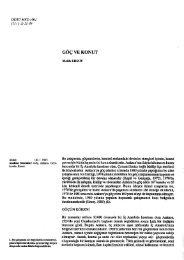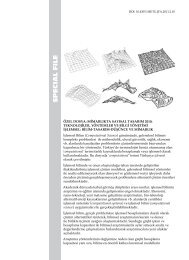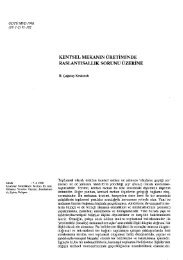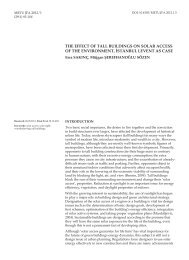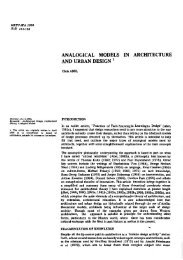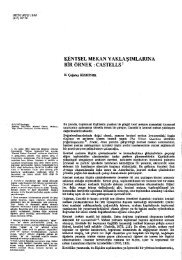Optimization of product design through quality function deployment
Optimization of product design through quality function deployment
Optimization of product design through quality function deployment
Create successful ePaper yourself
Turn your PDF publications into a flip-book with our unique Google optimized e-Paper software.
OPTIMIZATION OF PRODUCT DESIGN METU JFA 2011/1 11<br />
Table 8. Weights <strong>of</strong> customer requirements.<br />
Table 9. Technical attribute “fishbone<br />
diagram”.<br />
Afterwards their ranks are given to the customer requirements as seen in<br />
Table 8.<br />
The <strong>product</strong> should not splash water 2<br />
Easy cleaning 1<br />
Good appearance 1<br />
It should not keep bacteria and stains 1<br />
Liquid soap should not spill on floor 3<br />
Supporter handles should maintain their brightness 5<br />
Long term use 1<br />
Technical Attributes<br />
In this step, we focus on the technical attributes <strong>of</strong> the <strong>product</strong>. Technical<br />
requirements should be measurable so that we are able to determine<br />
whether customer requirements have been fulfilled. For this purpose, we<br />
analyze the cause-effect relationship. We create a fishbone diagram to see<br />
more detailed results and to be able to turn these results into a basic and<br />
clear technical attribute. There is a binary application between diagram<br />
causes and results, each start from either diagram causes to results or vice<br />
versa.<br />
The first application aimed at defining the real expectations <strong>of</strong> the<br />
customer, which were not necessarily explained by the customers<br />
themselves during the interview. The findings from this phase <strong>of</strong> the study<br />
demonstrated that one expectation could be the equivalent <strong>of</strong> another<br />
expectation in the mentioned list. For instance, while the customers<br />
pointed out non-splashing <strong>quality</strong>, they were also mentioning easy<br />
cleaning and hygienic qualities. It is obviously necessary to increase the<br />
diameter in order to stop splashing which would in turn increase the<br />
incline and provide a smooth fall from top to bottom. This form operation<br />
also would provide a better solution for cleaning since there would be less<br />
perpendicular surfaces which are capable <strong>of</strong> trapping dirt.<br />
The following stage demonstrates that the top critical expectations <strong>of</strong> the<br />
customers may require major changes in the <strong>design</strong> which would also<br />
cause a chain reaction between other technical aspects <strong>of</strong> the <strong>product</strong> or in<br />
the different phases <strong>of</strong> manufacturing processes. For example, an increase<br />
in the diameter <strong>of</strong> the sink automatically modifies its volume, form,<br />
<strong>product</strong> formworks and many other technical aspects. As can be easily<br />
understood, looking at these details and relating them to each other will


